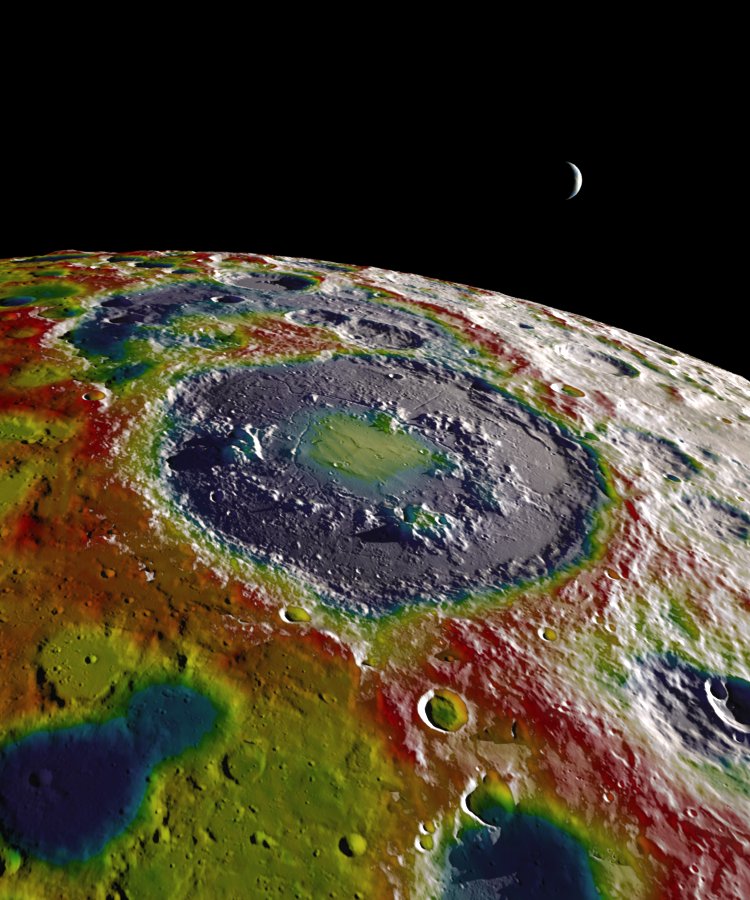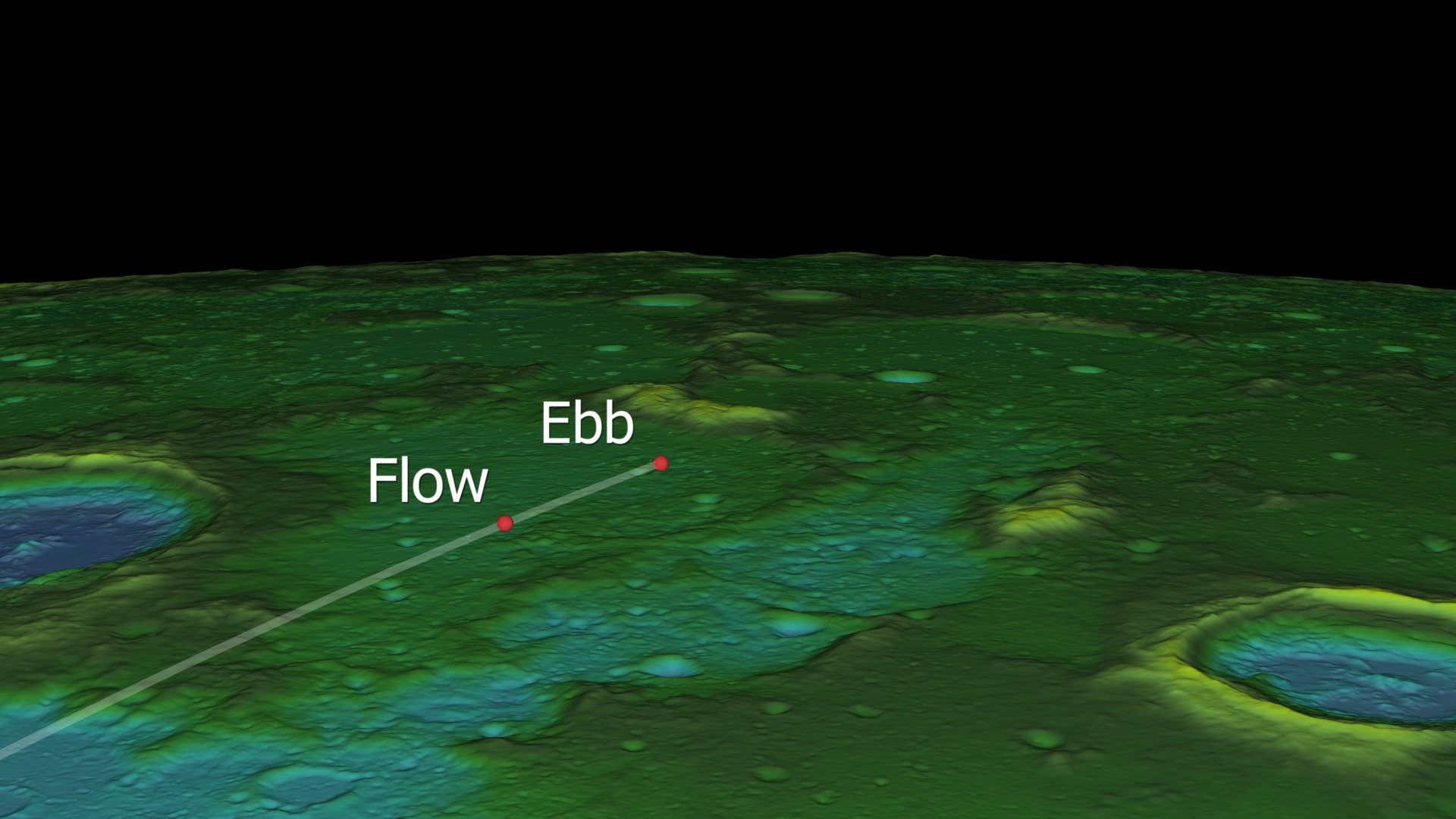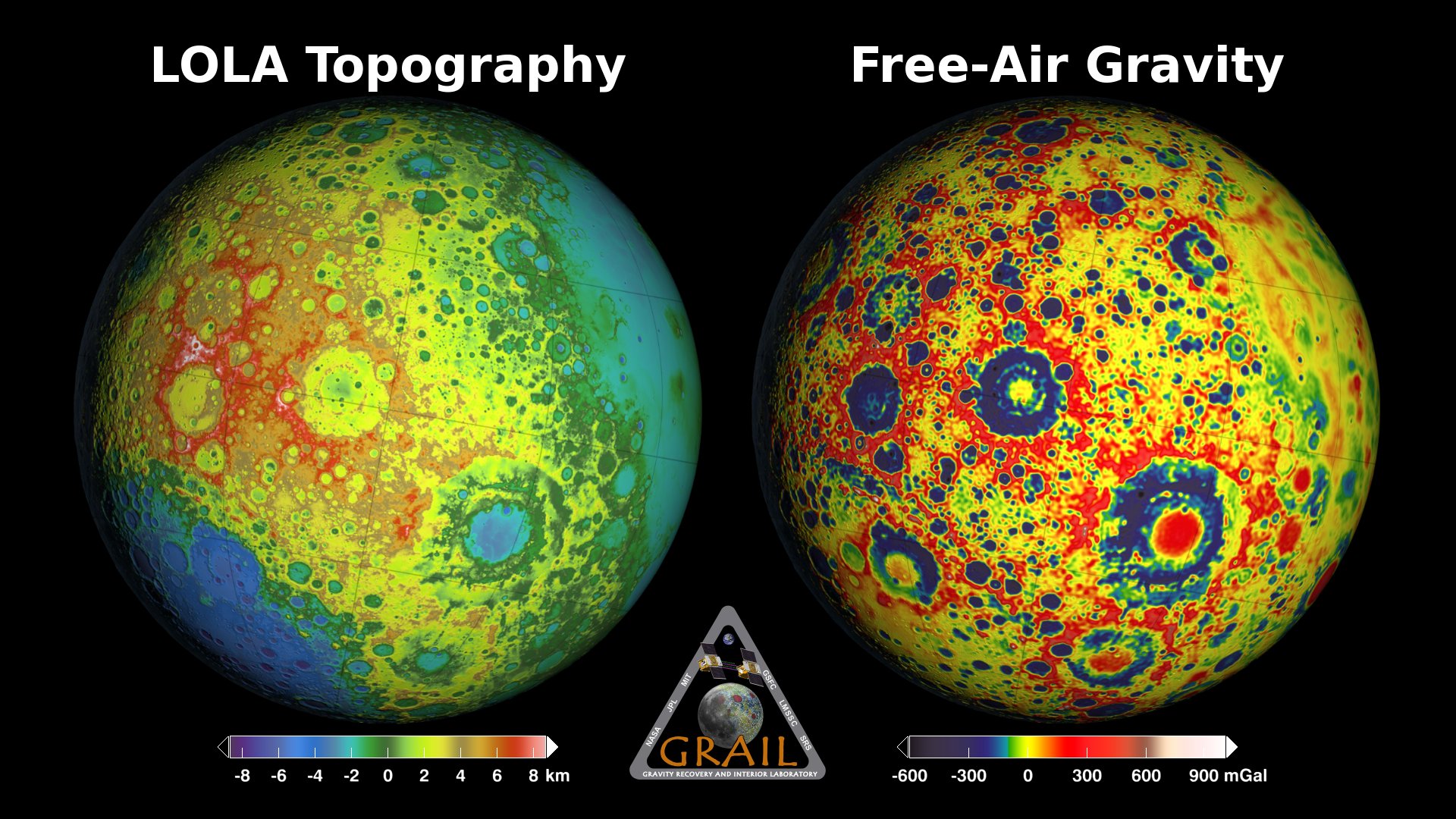Procellarum Rifts for the Cover of Nature
Oceanus Procellarum, or the Ocean of Storms, is the largest of the dark maria visible to the naked eye on the near side of the Moon. Its relatively flat surface of basaltic lava covers most of the northwest quadrant of the Moon's disk.
The leading explanation of Procellarum's origin is that it is a large, ancient impact basin. But the authors of a paper in the October 2, 2014 edition of the journal Nature suggest instead that this region is the result of the way the lunar crust cooled billions of years ago.
The red in the image shown here is part of a pattern of gravity anomalies revealed by data from the Gravity Recovery and Interior Laboratory (GRAIL) mission. Jeffrey Andrews-Hanna and his coathors interpret this rectangular feature as a remnant of the plumbing system that moved magma to the surface of the Moon's near side, flooding low-lying areas with lava.
The rectangular shape differs from the circular shape expected for an impact basin. It more closely resembles the pattern of cracks that form in materials subjected to thermal stress. In fact, the paper compares the shape of the Procellarum gravity anomaly with a feature spanning the south pole of Enceladus, the ice-covered moon of Saturn.

Gravity anomalies (red) bordering the Procellarum region are overlaid on a global elevation map.
Credits
Please give credit for this item to:
NASA's Scientific Visualization Studio
-
Animator
- Ernie Wright (USRA)
-
Scientist
-
Project support
- Laurence Schuler (ADNET Systems, Inc.)
- Ian Jones (ADNET Systems, Inc.)
Release date
This page was originally published on Wednesday, October 1, 2014.
This page was last updated on Wednesday, May 3, 2023 at 1:50 PM EDT.
Missions
This visualization is related to the following missions:Series
This visualization can be found in the following series:Papers used in this visualization
J. Andrews-Hanna et al., Structure and evolution of the lunar Procellarum region as revealed by GRAIL gravity data, Nature, 2 Oct 2014, p. 68
J. Andrews-Hanna et al., Structure and evolution of the lunar Procellarum region as revealed by GRAIL gravity data, Nature, 2 Oct 2014, p. 68
Datasets used in this visualization
-
DEM (Digital Elevation Map) [LRO: LOLA]
ID: 653 -
GRAIL Bouguer Gravity (Bouguer Gravity) [GRAIL: Lunar Gravity Ranging System]
ID: 767
Note: While we identify the data sets used in these visualizations, we do not store any further details, nor the data sets themselves on our site.


